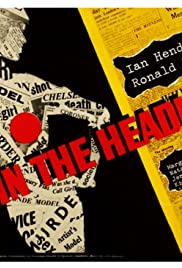
GIRL IN THE HEADLINES
UK, 1963, 90 minutes, Black-and-white.
Ian Hendry, Ronald Fraser, Margaret Johnston, Natasha Parry, Jeremy Brett, Kieron Moore, Peter Arne, Jane Asher, Rosalie Crutchley, Robert Harris, Duncan Macrae, Zena Walker, James Villilers, Patrick Holt.
Directed by Michael Truman.
This is a little-known police investigation murder mystery from the early 1960s. Though the police methods and styles are of the period, with its limited technology, this is still an entertaining police investigation.
The inspector at the centre is played by Ian Hendry (who was to have a successful career in films and in television, and in police investigations). He is rather quiet and introspective, loves opera, drives an expensive car (which has reminded many viewers of Inspector Morse), works well with his assistant, Ronald Fraser, making allowances for his lack of culture information (which has reminded many viewers of Lewis). One wonders whether Colin Dexter saw this film!
The investigation focuses on the death of a model who works as an escort in a club, was difficult at school, became pregnant and a termination, is alienated from her family, especially her mother (a somewhat aristocratic Margaret Johnston).
There is quite a range of suspects given the young woman’s connections. She lives in the same building as a television personality, played in his rather superior, even supercilious, style by James Villiers (insinuated as gay and then shown to frequent a gay club, and this was only three years since the release of Victim). There is her friend from school with whom she has taken up again, Natasha Parry. Much more sinister is Natasha Parry’s artist husband, Peter Arne, a very unpleasant personality who has provided a variety of alibis for the time of the murder. Then, there is his younger brother, played by a very young Jeremy Brett in pre-Sherlock Holmes years, who is in love with the dead woman, plays a boat on the river. And then there is the manager a club which was a base for the model and her escort work, Kieron Moore.
The investigation goes on apace, the inspector sometimes weary, relying on his assistant to do a lot of the footwork. There are also scenes of the detective at home, his rather wilful 16-year-old daughter, Jane Asher, and his sympathetic and supportive wife, Zena Walker.
Besides the strong cast of British character actors, there are some welcome cameo performances by Rosalie Crutchley and Duncan Macrae as a crusty old boat captain, Patrick Holt as the dead woman’s mother’s friend.
With a buildup to a climax, a great deal about drugs, smuggling, dealing, and the audience thinking that the mystery is solved, the actual solution comes rather unexpectedly and quickly at the end.
1. A 1960s British police investigation, murder mystery?
2. The black-and-white photography, the London settings, buildings, flats, homes, police precincts, clubs, the river, boats? The musical score?
3. The title, provocative? The dead girl, her background, at school, pregnant, expelled, termination, alienation from her mother and family, coming to London, model, at the club, escort? With her schoolfriend? David Dane and his blackmailing? The drug world? The interview with her mother, the alienation, the pregnancy by the mother’s partner?
4. Inspector Birkert, Ian Hendry, his personality, serious, opera loving and listening to the music, his car, his daughter at 16 and precocious, arguments, the support of his wife? His working with his assistant, Saunders? The relationship between the two, Saunders doing the footwork, always ready, but not as well educated as Burkert?
5. The body, the police, the murder, investigating the woman, getting the information, the cumulation?
6. David Dane, living in the same building, his television reputation, Birkert’s daughter and her admiration? His supercilious attitude, his image of himself? The issue of blackmail? Drugs? The possibility for him to be the murderer? His going to the gay club, the police presence? His murder?
7. The characters at the gay club, the police, the respectable customers?
8. The visit to the respectable businessman – and the revelation of his involvement?
9. The visit to the club, the manager and his self-assurance, welcoming the police? His knowledge of the victim? The later involvement, the club as a centre for drug dealing?
10. The murdered woman’s schoolfriend, the police visit, nervous? Her husband, artist, unpleasant personality, dominating, his variety of alibis? The later revelation of his drug dealing, the boats? His relationship with his brother, dominating him? Using him?
11. Jordan, relationship with his brother, his infatuation with the murdered girl, knowledge of the drugs, trying to help her? His work on the river? His collaborating with Inspector Birkert? The police going to the river, information about boats, drugs, the thugs on the river and the violence, the crusty old captain, the pursuit of Sam, the boarding of the boat, the revelation about the drugs, the involvement of so many characters, the manager of the club?
12. The interview with the murdered girl’s mother, aristocratic touches, the alienation? Her friend and his presence? The final confrontation, her confession to the murder, the motivation, her boyfriend, the pregnancy?
13. The Opera singer, her operation, bad days, her housekeeper and devotion, the inspector’s visit, listening to the record, seeing the shrine? And her being connected with the drug dealers?
14. A complex plot, frank themes, the early 1960s in terms of the drug world, prostitution and escorts?
15. And the suddenness of the solution?